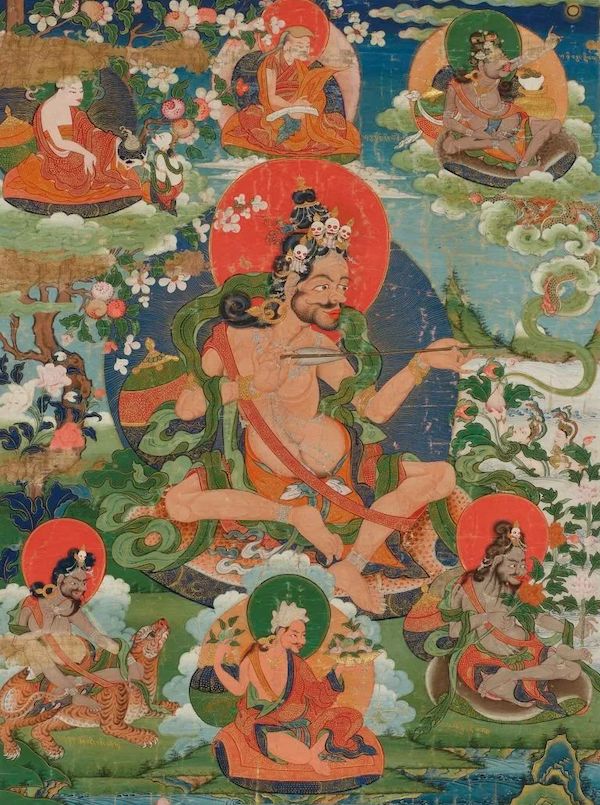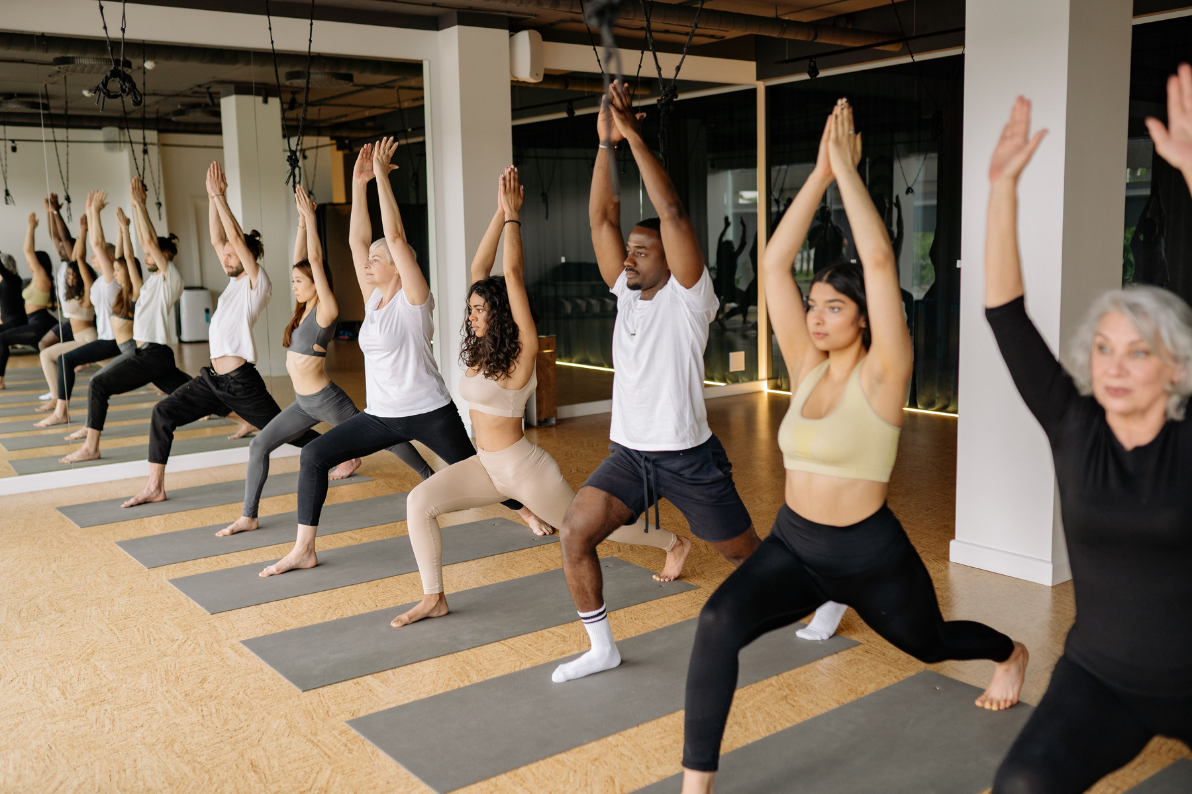The Untold History of Yoga: From Ancient India to a Global Wellness Revolution
Introduction to Yoga
Origins of Yoga
The origin of yoga can be traced back to ancient Indian civilization. In ancient India 5,000 years ago, it was called “the treasure of the world”. It has a strong tendency towards mystical thinking, and most of it is passed down from master to disciple in the form of oral formulas. The early yogis were all intelligent scientists who challenged nature all year round at the foot of the snow-covered Himalayas. In order to live a long and healthy life, one must face “disease”, “death”, “body”, “soul” and the relationship between man and the universe. These are the issues that yogis have studied for centuries.
Yoga originated in the Himalayan foothills in northern India. Contemporary philosophy researchers and yoga scholars, based on research and legends, have imagined and described the origin of yoga: On one side of the Himalayas, there is a 8,000-meter-high Holy Mother Mountain, where there are many hermits who practice meditation and hardship, and many of them become saints. As a result, some people began to envy and follow them. These saints passed on the secret methods of practice to their followers in the form of oral formulas, and these were the first yogis. When ancient Indian yoga practitioners were practicing their bodies and minds in nature, they accidentally discovered that various animals and plants were born with ways to heal, relax, sleep, or stay awake, and they could recover naturally without any treatment when they were sick.
They carefully observed animals to see how they adapted to natural life, how they breathed, ate, excreted, rested, slept, and overcame diseases effectively. They observed, imitated, and personally experienced the postures of animals, combined with the human body structure and various systems, and created a series of exercise systems that are beneficial to the body and mind, that is, asanas. At the same time, they analyzed how the spirit affects health, explored means of controlling the mind, and sought ways to achieve harmony between the body, mind, and nature, thereby developing human potential, wisdom, and spirituality. This is the origin of yoga meditation. After more than 5,000 years of practice, the healing methods taught by yoga have benefited generations of people.
At the beginning, yogis practiced in caves and dense forests in the Himalayas, and then expanded to temples and country houses. When yogis enter the deepest level in deep meditation, they will achieve the combination of individual consciousness and cosmic consciousness, awaken the dormant energy within, and gain enlightenment and the greatest pleasure, thus giving yoga a strong vitality and appeal, and gradually spreading among ordinary people in India.
Around 300 BC, the great Indian sage Patanjali created the Yoga Sutras, on which Indian yoga was truly formed, and the practice of yoga was formally defined as an eight-limbed system. Patanjali is a saint who has great significance for yoga. He wrote the Yoga Sutras, which gave all the theories and knowledge of yoga. In this work, yoga formed a complete system for the first time. Patanjali is revered as the founder of Indian yoga.
Archaeologists have discovered a well-preserved pottery in the Indus River Basin, on which a yoga figure is depicted meditating. This pottery is at least 5,000 years old, which shows that the history of yoga can be traced back to an even older time.
Vedic Proto-Vedic period
Vedic period
The initial concept of yoga appeared in the 15th century BC to the 8th century BC. The invasion of the nomadic Aryans exacerbated the decline of the indigenous civilization of India and brought the Brahman culture. The concept of yoga was first proposed in the religious classic “Vedas”, which defined yoga as “restraint” or “discipline” but without postures. In its last classic, yoga was used as a method of self-restraint, and also included some content of breathing control. At that time, it was created by priests who believed in God for better chanting. The goal of Vedic yoga practice began to transition from mainly based on physical practice to achieve self-liberation to the religious philosophical height of realizing the unity of Brahman and Atman.
Pre- Classical
Yoga becomes a way of spiritual practice
In the sixth century BC, two great men were born in India. One is the well-known Buddha, and the other is Mahavira, the founder of the traditional Jain sect in India. The Buddha’s teachings can be summarized as the “Four Noble Truths: suffering, origin, cessation, and path”. Both systems of Buddha’s teachings are widely known to the whole world. One is called “Vipassana” and the other is called “Samapatti”, which includes the famous “Anapanasati”. In addition, Buddha established a basic framework for spiritual practice called the “Eightfold Path”, in which “right livelihood” and “right effort” are more or less similar to the precepts and diligence in the Raja Yoga.

Statue of Mahavira, founder of Jainism in India
Buddhism was widely popular in ancient times, and Buddhist practice methods based on meditation spread to most of Asia. Buddhist meditation was not limited to certain monks and ascetics (Sadhus), but also practiced by many lay people. Due to the widespread spread of Buddhism, meditation became popular in mainland India. Later, from the end of the 10th century to the beginning of the 13th century, Turkic Muslims from Central Asia invaded India and settled there. They dealt a heavy blow to Buddhism and forced Indians to convert to Islam through violence and economic means. By the beginning of the 13th century, Buddhism was dying out in India. However, in China, Japan, South Korea and Southeast Asian countries, the Buddhist meditation tradition has been preserved and developed.
In the 6th century BC, Buddha introduced (Vipassana), which disappeared in India in the 13th century. Muslims invaded and forced Islam. In the 8th century BC-5th century BC, in the religious classic Upanishads, there is no asana, which refers to a general practice method that can completely get rid of pain. There are two popular yoga schools, namely: karma yoga and jnana yoga. Karma yoga emphasizes religious rituals, while jnana yoga focuses on the study and understanding of religious scriptures. Both methods of practice can enable people to eventually reach the state of liberation.
Classical period
5th century BC – 2nd century AD: Important yoga classics appear
Around 300 BC, the Indian sage Patanjali created the Yoga Sutras, on which Indian yoga was truly formed, and the practice of yoga was formally defined as an eight-limb system. Patanjali is revered as the founder of yoga. The Yoga Sutras talk about achieving a state of balance of body, mind, and spirit through spiritual purification, and define yoga as a way of practice that suppresses the fickleness of the mind. That is: the culmination of the Samkhya thought and the practice theory of the Yoga school, strictly abide by the eight-limbed method to achieve liberation and return to the true self. The eight-limbed method is: “Eight steps to practice yoga; self-discipline, diligence, meditation, breathing, control of the senses, perseverance, meditation, and samadhi.” It is the center of Raja Yoga and a way to achieve enlightenment.
Post-Classical
2nd century AD – 19th century AD: Modern Yoga flourished
Tantra, the esoteric religion that has a profound influence on modern yoga, believes that ultimate freedom can only be obtained through strict asceticism and meditation, and that freedom can be finally obtained through the worship of the goddess. They believe that everything has relativity and duality (good and evil, hot and cold, yin and yang), and the only way to get rid of pain is to connect and integrate all the relativity and duality in the body. Patanjali-although he emphasized the necessity of physical exercise and purification, he also believed that the human body is unclean. A truly enlightened yogi will try to get rid of the company of the crowd to avoid being polluted. However, the (Tantra) Yoga school appreciates the human body very much, believes that Lord Shiva exists in the human body, and believes that the origin of all things in nature is sexual power, which is located below the spine. The world is not an illusion, but a proof of divinity. People can get closer to divinity through their experience of the world. They prefer to combine male and female energy in a symbolic way. They rely on difficult yoga postures to awaken the female power in the body, extract it from the body, and then combine it with the male power located on the top of the head. They respect women more than any yogi.

After the Yoga Sutras, it is post-classical yoga. It mainly includes the Yoga Upanishads, Tantra and Hatha Yoga. There are 21 Yoga Upanishads. In these Upanishads, pure cognition, reasoning and even meditation are not the only ways to achieve liberation. They all need to achieve the state of unity of Brahman and Atman through physiological transformation and spiritual experience caused by ascetic practice techniques. Therefore, dieting, abstinence, asanas, seven chakras, etc., combined with mantras, hand-body …
Modern era
Yoga has developed to the point where it has become a widely spread method of physical and mental exercise in the world. It has spread from India to Europe, America, Asia-Pacific, Africa, etc., and is highly respected for its obvious effects on psychological stress relief and physiological health care. At the same time, various yoga methods have been continuously evolved, such as hot yoga, hatha yoga, hot yoga, health yoga, etc., as well as some yoga management sciences. In modern times, there are also some yoga figures with wide influence, such as Iyengar, Swami Ramdev, Zhang Huilan, etc. It is undeniable that the long-standing yoga will attract more attention from people from all walks of life.

If you have any questions or want to know more, please contact us
